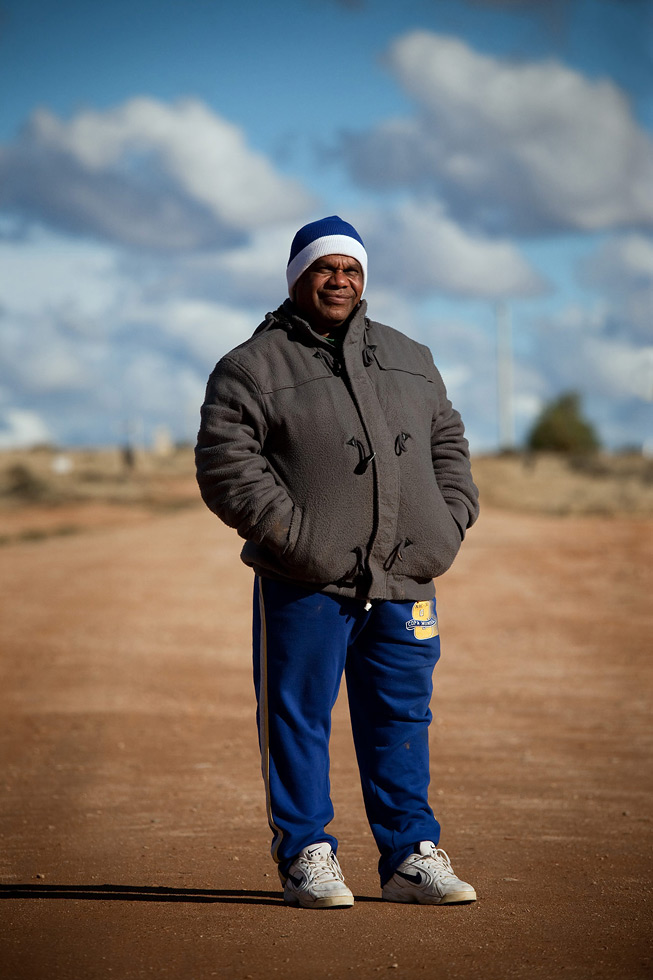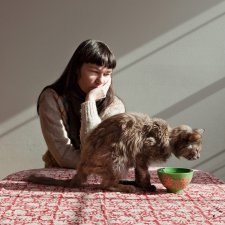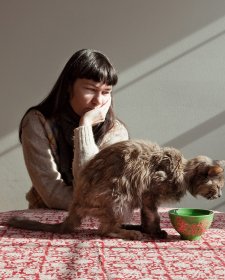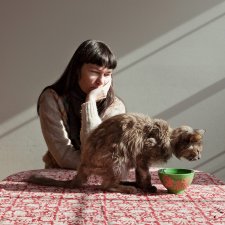How do you define your practice?
Photographer, mainly documentary and portraiture photography.
Do you have a website or are you represented on a website?
krystalseigerman.com.au and mapgroup.org.au
How would you describe your relationship to the subject/s?
Peter and I were both employed to help run an American exchange program through La Trobe University. Peter as the cultural officer and myself as a photography teacher.
Was the photograph a result of a constructed, fabricated or candid encounter? Please describe.
The photograph was a brief, candid moment, which unfolded into a portrait. Peter and I were in Silverton, NSW, chatting as our students explored the town. The weak afternoon light suddenly became dramatic and defined, so I asked Peter if I could take his portrait. Other than asking him to stand in the middle of the dirt road facing me, there was very little direction.
What are the ideas or themes underpinning your portrait?
As Peter's portrait was spontaneous, I didn't have any conscious ideas or themes in mind. In these situations, taking the photograph becomes automatic and it is only later that themes might emerge. When I look at it now, I see Peter's warmth and strength, which enable him to be a role model for many, including the American exchange students he has worked with for over a decade. I hope this comes through in my photograph.
Please describe the technical aspects of your photograph?
I used a Canon 5d to take my portrait, with a telephoto lens and a wide aperture to blur the background so that Peter was the focus. I shot from a slightly low angle so that he stood out from the horizon. I used available, natural light, which was coming from the side, one of my favourite types of portrait lighting. Having shot in RAW, I processed my image in Photoshop, only doing basic corrections (colour, contrast density etc) to achieve the final result.
How was the final print made? Is this print one of an edition?
I printed Peter's portrait myself, on a large format digital inkjet printer. I used an archival lustre paper to retain richness and depth of colours and tones. I find matte fine art papers flatten out photographs too much for my liking. This print is not part of an edition so I may print further copies in the future.
Describe your consideration of scale, mounting and framing in the presentation of your portrait?
While I would love to have printed the photograph larger, there were practical considerations, such as the expense as well as the limitations of the file size. The final, finished size of approximately 65cm x 50cm was a compromise between these factors. I chose a slightly off white mount as 'pure' white can be too stark and I chose a simple, dark brown, wooden frame to tie in with the earthy colours of the photograph.
Who would you nominate as your influences?
My colleagues in MAP group, an independent association of documentary photographers. My mentor Andrew Chapman has over the years instilled a love of documentary photography within me. While I can't necessarily see their influences within my work, long term favourite photographers include National Geographic photographer William Albert Allard, the photographers of the Farm Security Administration who documented the Great Depression, particularly Dorothea Lange and Walker Evans, and more recently, Alec Soth.
Do you have any advice for young photographers (eg. students)?
Keep taking photos, as it is the best way to learn. Pay attention to light and how it changes. Read lots of photography books and look at lots of photographs. Ask if you can do work experience with a few photographers to clarify if you would like to pursue photography as a career. If you genuinely love photography, never give up. It's a difficult industry to break into, but remember, there are many different entry points and paths that you can take.
















